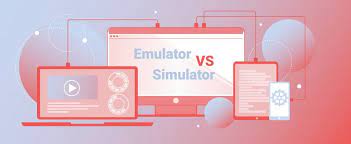With a massive increase in smartphone users, running a mobile app test has gained great significance in the testing world. Releasing quality apps has become an important part of the overall development process.
Mobile app testing ensures that changes do not break the user experience across different devices. It involves finding and solving issues like identifying bugs in navigation, issues in signing up forms, any breakage in payment processing, and simply any differences in font sizes.
Device under test play an essential role in a vigorous mobile testing process. Due to the difference in hardware configuration, operating systems, and screen resolutions of a variety of mobile devices, the testing procedures can generate modified results when performed on different devices. For example, some features of the application may render well in one instance and render distorted in others.
The main reason the testers need to focus on mobile testing solutions is to make sure the uniform behavior of websites or mobile apps on different mobile devices and ensure a seamless user experience. Hence, it is essential to choose the correct test method and test on the right mobile devices to maximize test efficiency and get more accurate results that can help identify and resolve the issues.
So it is a must to understand the different mobile testing devices to leverage them for delivering quality mobile applications.
Types of Mobile Testing Device Solutions
There are mainly two types of devices to conduct mobile testing: Real Devices and Virtual Devices.
Real Devices
Real devices as the name implies are actual physical handsets that the end user uses.
They are the various mobile handset models that are used to run the website or app to test its behavioral patterns and functionality.
Testing on real devices means testing the same way that real users are operating their handset, and assures that the application is working smoothly on the user’s device. For application testing, buying multiple real devices with iOS, Blackberry, Android phones, tablets, and iPads and updating them from time to time with new devices incur high costs and are also not possible.
Although the results of testing on real devices are highly accurate, the expense it invites in buying them is huge and quite challenging. So to overcome this challenge the organizations have come up with a solution by introducing virtual testing devices such as Simulators and Emulators.
Virtual device
Virtual testing devices are excellent to conduct cross-browser compatibility testing for the application. Testing on virtual machines, lets the developers and testers monitor the application’s performance on a specific device. Virtual testing replicates real devices and creates a virtual mobile device on a computer.
It helps the testers to run the application by simulating the nature of the device. So that the testers get an idea of how it would run on a real device for an end user. Although virtual testing devices can imitate real devices and are cost-friendly, real devices cannot be replaced due to accuracy and reliability factors.
The two types of virtual testing devices are Emulators and Simulators. Both serve similar purposes and are often interchangeably used. They imitate the real thing in a virtual environment, but that does not mean that they work in identical ways. There are distinct differences between them in terms of capabilities and limitations when it comes to mobile automation.
We are going to discuss the difference between the two but before diving into the differences it is important to know what they actually are and figure out when to use them individually.
Emulators
An Emulator is software that allows your mobile’s hardware and software to imitate the features of the device by installing them to another computer or Mobile. Simply it can be said that emulation helps a computer system (the host) to imitate the software or hardware features of the targeted device (the guest) system.
So emulations can be considered as the capability of mimicking the functions of one device on another. Where the second mobile device behaves like the original device by replicating the external behaviors of the first system. Emulators are basically used as alternates, for original devices in a virtual environment for real use.
Emulators translate the ISA (Instruction Set Architecture) of the target device to the one used by the computer to conduct testing by using binary translation. ISA is a set of instructions written in Machine Language that they use to build their own device configuration to describe the functionality and behavior of the device. By replicating the target device’s ISA on the computer, a virtual environment for testing is created.
There are various types of emulators available that allows you to replicate software, hardware, CPU, or operating systems, some of the widely used emulators for application testing are Android emulator, Galaxy emulator, and iPhone emulator
Emulation primarily means a complete imitation of the real thing. It just acts as the real world. An emulator in mobile testing is also a virtual device that allows you to test the app by emulating a real device. A device emulator imitates the hardware or operating system of the device.
Simulators
A Simulator is software that mimics the basic behavior and configuration of a real device. It helps your computer to run certain programs built for a different Operating System. Simulators copy things from the real world into a virtual environment to provide an idea about how the device would work. It provides results depending on various actions and possibilities without causing any risk; this helps to avoid designing faulty circuits.
A simulator mimics the basic behavior but doesn’t exactly follow all the rules of the real environment. They are mainly used for iPhone and iPad devices. Just by sitting on top of your computer operating system, an iOS simulator runs the necessary application inside it. But to run the iOS simulator, developers need to work either on the MacBook or virtualize macOS only on their existing systems as it needs Apple’s native Cocoa API to handle GUI, runtime, and many other operations. An iOS simulator is faster than an Android emulator because it does not require any machine language translation.
Unlike emulators, Simulators do not mimic hardware. Thus certain functionalities like battery usage, cellular interrupts, etc, cannot be investigated for testing while using simulators.
Simulators vs. Emulators: How They Differ
Emulators and Simulators both are virtual devices that are not real but software providing the same functionality as the real one. Both play an important role in the Software Development Life Cycle. It reduces the test time and costs to the developers and testers. Because Setting up a real hardware device and testing on each is tedious and time-consuming.
In a virtual environment, emulators and simulators are excellent for their ease of access, which is ideal for testers that need to quickly test mobile device apps.
Sometimes Emulators and Simulators are interchangeably used in communication as if the two are synonyms, but in reality, they differ from each other in many ways.
Emulators duplicate all the hardware, software, and operating systems of a real device Which means it allows to model the older hardware and software using current or new technology replicating the experience of using the original. Whereas simulators create an environment by mimicking the behavior and configuration of an actual device. It lets you experiment with a valid digital representation of the system to establish a virtual and safe environment. So that each attribute can be tested and refined to production levels.
The internal structure of emulators is programmed in machine-level assembly language that needs a binary translation to create a virtual environment to mimic the way the actual device works. On the other hand, simulators are programmed in a high-level language that does not need any binary translation. Therefore binary translation makes emulators slower due to latency, which is not the case in simulators.
One of the advantages of a simulator is that it provides an exact environment without demanding the original system. Using the emulation method, the user will not feel much different from the actual system. It is a complete reimplementation of the original software. Whereas simulators ensure that the display of the interface of an application is the same and accurate in various screen resolutions. It does not follow all the rules of the actual environment because it is a partial reimplementation of the existing software.
When to use what
As we have already discussed, emulators and simulators both are virtual devices but they vary in nature of use. So it is also important to know when to use them.
With the features that each delivers, they can bring optimized results and make cross-browser compatibility testing a lot easier when used diligently. Since the virtual devices provide a better-debugging facility, it is best suited to use during the initial stages of code development, when the features are only shaping up. They also make the cycle faster and more efficient with the frequent iterations required in the early phase.
Emulators are best when testing focuses on software interactions with the underlying hardware or a combination of hardware and software. Other situations where emulators come into use are when it is needed to figure out issues in the applications if firmware gets updated. It is also used to evaluate the application’s performance on different CPU types and memory allocations.
On the other hand, Simulators are ideal in situations where testing scenarios are focused to ensure that an application performs as expected throughout its interactions with external applications or environments.
Emulation, Simulation, & Real Device Testing With LambdaTest
Simulation and emulation each have their strengths and limitations, making them suitable for certain phases of testing but not for others. Virtual platforms are important and beneficial during the initial phase. However, testing only with emulation or simulation may put the app at risk of defects and impact the end-user experience.
Hence, adopting a Real Device Cloud for testing as well as relying on virtual devices will be ideal for a comprehensive mobile test strategy that can provide the best of both worlds. For some scenarios, it is impossible to assess how the application works without placing it in a real-world context; no emulator or simulator can replicate real user conditions. Although parts of Regression testing could still be done using virtual devices after a point, it lacks accuracy and might end up with compromised results.
progressing towards, performance testing, regression testing, Sanity testing, end-to-end testing, and User Acceptance testing, it is more reliable to test against real environment conditions(real devices) for accurate results, or else risk defects may escape.
Get your testing done right with LambdaTest reliable real device cloud that provides you ideal testing strategy with a native real device experience, the accuracy of results, Cost saving, easy debugging using virtual devices, Web automation testing, and app automation mobile testing for rapid testing at scale, hassle-free live interactive cross-browser testing and interactive app testing.
It is equipped with thousands of real device, Android emulator and iOS simulator within the same platform. LambdaTest offers more than 3000 real browsers and devices for both manual interactive testing and automated Selenium testing. Hosted on the cloud, allows them to be accessible from anywhere at any time.
Using this real device cloud will be the perfect solution, for testers to uncover bugs as well as for developers to fix bugs easily while keeping costs low. You can try testing on simulators, emulators, and real devices with LambdaTest to achieve accelerated and cost-effective mobile testing
Conclusion
After knowing all about emulation and simulation it can be concluded that both types of testing are beneficial when it is required to test code quickly across a large range of variations. But it is also important to note that neither can be a complete substitute for real-device testing. which is a must perform at critical points, for example before releasing an application into production.
Also Read: What Does Sent As Text Message Mean?


